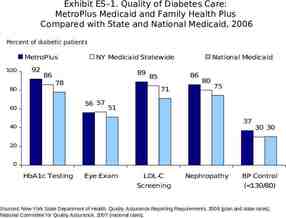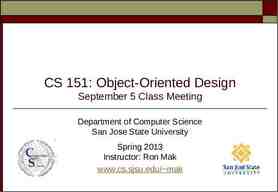Evaluation of DBMiner By: Shu LIN Calin ANTON
22 Slides2.85 MB
Evaluation of DBMiner By: Shu LIN Calin ANTON
Outline Importing and managing data source Data mining modules Summarizer Associator Classifier Predictor Conclusions
View of Warehouses and Hierarchies Tables Datamarts Columns Dimensions Measurements Cubes
Creating Data Warehouse Importing relational data: only the default database that DBMiner provides can be used. Easy to import a datamart and difficult to create one. Datamart can be associated with only one table/view. Creation of datamart is not easy enough for usual users and not flexible enough for professional users
Creating Data Warehouse (continued) Concept hierarchy is automatically generated when a dimension is created, but the user can scarcely customize it. Only numerical attributes are allowed as measures We think it would be better if DBMiner had a wizard to help user build a data cube.
Browsing Data Cube The visualization of data cube is very instructive. User can perform some OLAP operations but slicing. Data cube browser also presents the data dispersion.
Browsing Data Cube (continued)
Browsing Data Cube (continued)
Data Mining Mining functions: summarization, association, classification, prediction. OLAP functions are integrated with mining functions. The mining process is performed on line. A wizard guides user through mining process.
The Summarizer Generalize/summarize data at high abstraction levels The output is presented in six different forms: crosstab, 3D bar chart, 3D area chart, 3D cluster bar, 2D bar chart and 2D line char. The output can be presented on only two dimensions at a time, and not all the combinations of two dimensions are possible.
The Summarizer (continued)
The Summarizer (continued)
The Associator Find association among a set of attributes and their values. We find a bug in this module. User can change the settings or constraints during association mining to make the association rules more accurate. Association rule is visualized as table, bar chart, and ball chart.
The Associator (continued)
The Associator (continued)
The Associator (continued)
The Classifier Based on the features present in the class labeled training data, develop a description or model for each class. The output is presented as a complete classification tree (decision tree) good in the sense that user can get a clear impression of classification process. Redundant if user only cares about the classification rules.
The Classifier (continued)
The Predictor Predict data value distributions based on the available data. The output is presented as a set of curves if the predictive attribute has continuous numeric values; otherwise, a set of pie charts is used. The output is present only on one dimension. It cannot show how the combination of two predictive attributes affect the predicted attribute.
The Predictor (continued)
The Predictor (continued)
Conclusions It integrates OLAP functions with mining functions. It works on line, i.e., it is fast. It generates multiple forms of output: graphics, tables, and different kinds of charts; It has a user-friendly interface, and for each mining function it has a wizard, which guides the user through the mining process.



























